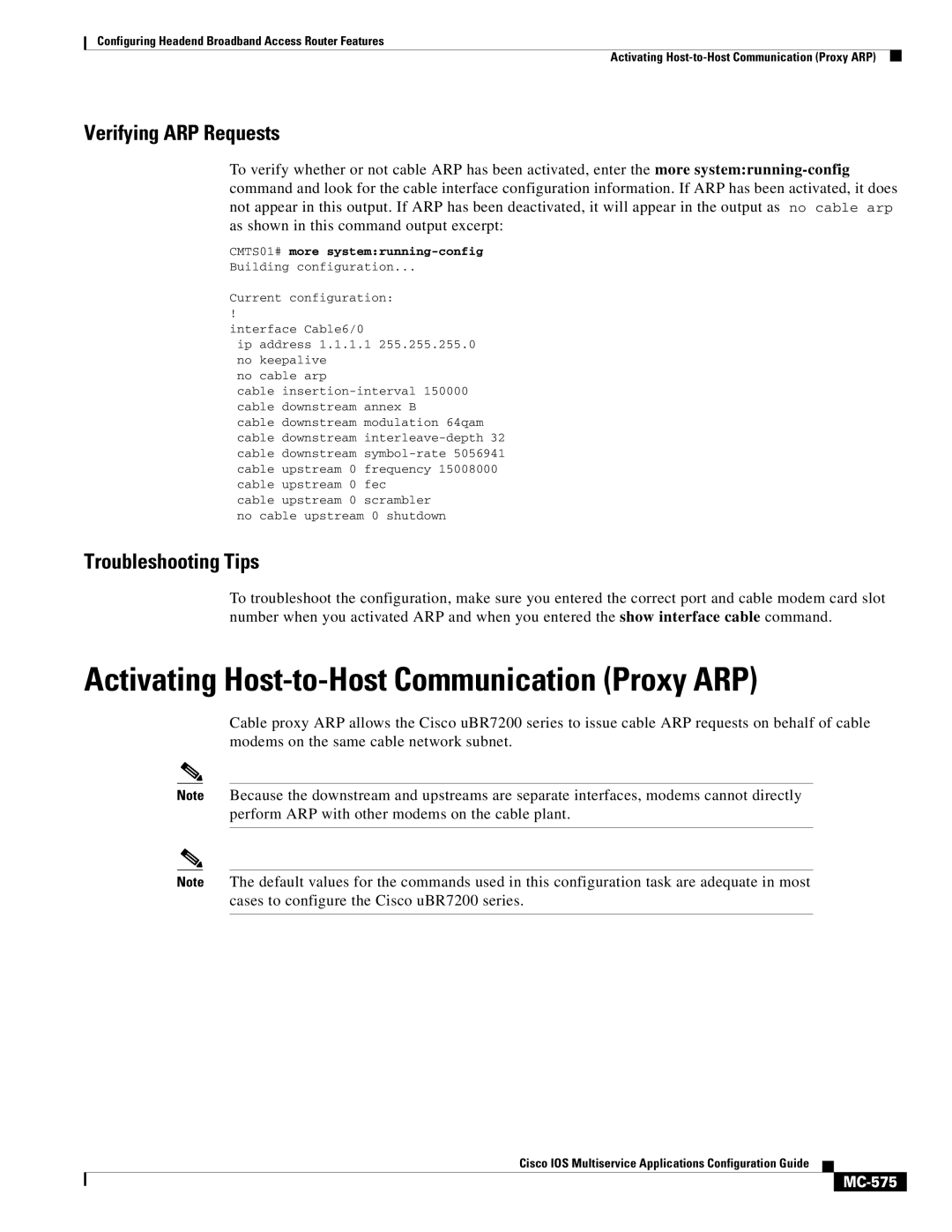
Configuring Headend Broadband Access Router Features
Activating
Verifying ARP Requests
To verify whether or not cable ARP has been activated, enter the more
CMTS01# more system:running-config
Building configuration...
Current configuration:
!
interface Cable6/0
ip address 1.1.1.1 255.255.255.0 no keepalive
no cable arp
cable
cable downstream | annex B |
cable downstream | modulation 64qam |
cable downstream | |
cable downstream | |
cable upstream 0 | frequency 15008000 |
cable upstream 0 | fec |
cable upstream 0 | scrambler |
no cable upstream 0 shutdown
Troubleshooting Tips
To troubleshoot the configuration, make sure you entered the correct port and cable modem card slot number when you activated ARP and when you entered the show interface cable command.
Activating Host-to-Host Communication (Proxy ARP)
Cable proxy ARP allows the Cisco uBR7200 series to issue cable ARP requests on behalf of cable modems on the same cable network subnet.
Note Because the downstream and upstreams are separate interfaces, modems cannot directly perform ARP with other modems on the cable plant.
Note The default values for the commands used in this configuration task are adequate in most cases to configure the Cisco uBR7200 series.
Cisco IOS Multiservice Applications Configuration Guide
